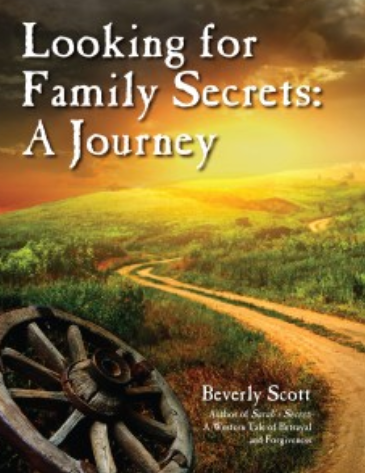
Guest Blogger, Bev Scott, has an interesting perspective on bias of our history. She brings up provocative questions.
The following is based on a session Bev attended at the Historical Novel Society Conference in June 2017 by James J. Cotter, titled “The Lone Ranger was Black: Reintegrating Minority Viewpoints into Historical Fiction.”
“The title intrigued me,” wrote Bev. “Was the Lone Ranger modeled after Bass Reeves, the first black U.S. deputy marshal who worked thirty-two years in the Arkansas and Oklahoma territories in the late 1800’s? He may have been.”
History Is Biased
The conference session addressed the issue of bias in our history. That bias impacts authors of historical fiction. Today we no longer view history as “the truth.” Rather, history is a story told through the lens of the teller. Did you love the Lone Ranger when you were growing up? I did. Audiences assumed he was a courageous (and white) lawman. That’s how the story was told.
Readers of historical fiction express their fondness for this genre because they like a particular historical period. Plus, they enjoy learning from fiction set in an historical context. Readers also expect accurate history in the stories they read. So, historical fiction writers have a responsibility to the historical record. But what record?
Finding Alternative Viewpoints
And so arises the key question for authors of historical fiction. How do we tell stories and develop characters with lives extremely different from our own given the bias of historical sources? How do we find alternative viewpoints? And, how can we do justice to the painful experiences of non-dominant characters in our stories?
Consider the story of Custer’s Last Stand or the Battle of the Little Bighorn. The Lakota Sioux and Cheyenne people believed they were betrayed. The U.S. government ignored their treaty rights after gold was discovered on native lands. White Americans believed the Indians were wild, bloodthirsty and stubborn, refusing to move to the reservation. Many of us learned only the white American history version growing up.
Bass Reeves and The Lone Ranger
When we watched and admired the fictional Lone Ranger as children, we accepted how he was portrayed. Yet, he probably reflected the real-life story of Bass Reeves, a former slave. Reeves gained fame through his exploits and imposing stature of 6’2.” The first black lawman west of the Mississippi, he cut a striking figure on his large gray (almost white) horse. Reeves wore his trademark black hat and twin .45 Colt Peacemakers cross-draw style. Bullets never touched him, although he brought in 3000 criminals alive and 14 dead, whom he killed in self-defense.
Reeves earned the name “the Indomitable Marshall.” He left silver dollars behind as his calling card. Similar to the fictional Lone Ranger, Reeves developed friendships with Native Americans and learned their languages. He also used disguises to capture those he pursued. The racism in our culture probably prevented the Lone Ranger hero from being portrayed as a black lawman.
“Who WAS that Masked Man?” Was it Bass Reeves?
Multiple narratives combine to become a complete historical narrative. We often learn only one limited narrative part. For example, most stories about homesteaders portray them as white. They settle on the prairie, risk their lives and battle extreme conditions. Yet, in researching my historical novel, Sarah’s Secret, I discovered a little-known town in Kansas called Nicodemus. This town drew freed slaves to homestead in the surrounding area after the Civil War.
Offering an Opposing Voice
As writers of historical fiction, we have an obligation to readers to offer an accurate portrayal of both our characters and the historical context. Our discussion in this conference session emphasized the importance of deep knowledge and experience of the culture in which our story is set. And further, writers must recognize the historical biases of the sources we are using. This is especially important if the writer is writing in a cultural context other than her own.
Writing historical fiction gives an opportunity to balance the bias of history by including an opposing voice of the non-dominant group in the story. Since my protagonist, Sarah was traveling north by wagon through Kansas to return to Nebraska and her family, I chose to add such voice. Thus, Sarah and her children unexpectedly encounter a black family in the middle of Kansas living near Nicodemus.
Sarah follows a narrow path with her seriously ill daughter to find help. She discovers a welcoming family descended from former slaves. Luckily, the family shares their modest home for several days while Sarah nurses her daughter back to health. Her sons have fun with the son of the family. The plot gives an opportunity to include an opposing voice to traditional bias. Sarah tells her concerned son stories about her own and her father’s rejection of slavery. She tells of their support for the Union in the Civil War and her family’s generosity toward “Negro” families when she was a child.
Originally posted on Bev Scott’s blog on July 11, 2017, with photos that are not included in this post.
Bev Scott will be one of the Writers Forum‘s presenters on February 18, 2021.